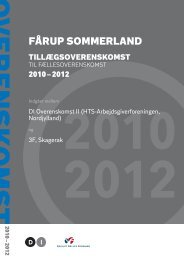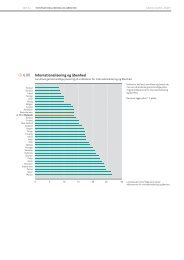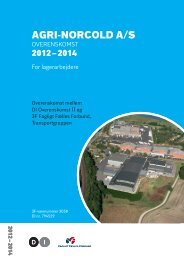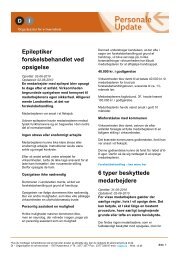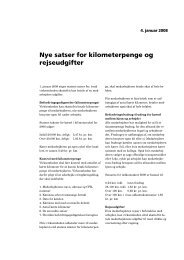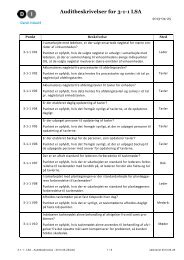Hydrogen and its competitors, 2004
Hydrogen and its competitors, 2004
Hydrogen and its competitors, 2004
Create successful ePaper yourself
Turn your PDF publications into a flip-book with our unique Google optimized e-Paper software.
48Risø Energy Report 3<strong>Hydrogen</strong> in portable devices5.5Cellular PhoneCellular PhoneFigure 26: This “power holster” for a mobilephone uses DMFCs to charge the phone battery(source: Manhattan Scientifics).Micro-Fuel Cell TMPower Holster TMSMicro-Fuel Cell TMPower Holster TMFuel Ampulecell system volume. For device-integrated fuel cellsystems, volume is clearly even more important thanreliability, lifetime <strong>and</strong> costs.It is therefore important to reduce the size of the fuel cellstack, the fuel storage system <strong>and</strong> auxiliary componentssuch as valves, sensors, control un<strong>its</strong> <strong>and</strong> liquid/gas separators.For this reason, air or oxygen should be suppliedto the fuel cell without the need for active air movementssuch as fans. Water management is perhaps themost complicated problem for miniature PEMFCs <strong>and</strong>DMFCs, because it includes fuel concentration control,membrane humidification, water recovery <strong>and</strong> recirculation.Whereas it is possible to operate a fuel cell passivelywithout any peripheral device, substantial improvementsare expected from engineering modeling.In principle there are two ways to construct small fuelcells. One is to take a st<strong>and</strong>ard fuel cell <strong>and</strong> miniaturiseit; the other is to use micro-fabrication techniques, inwhich the various components – membranes, electrodes<strong>and</strong> catalyst – are “printed” directly onto ceramic orsilicon wafers, or more recently flexible polymer sheets.The power conditioning for the low-power device-integratedapplications is unlike analog equipment thatdraws a steady current; the mobile phone, for instance,requires short, large current spikes. Therefore, a hybridconfiguration of fuel cells with a small battery or a supercapacitor may be necessary.The following examples show a device-integrated fuelcell <strong>and</strong> a methanol micro-reformer.Figure 26 shows a “power holster” fitted with DMFCswhich charge the phone when it is in the holster. Thearray contains ten fuel cells in a package measuring 120x 46 x 0.5 mm <strong>and</strong> generating around 1 W. The cells areformed from paper-thin plastic sheets intended for rollfedmass production. They are mounted side by side, butare connected in series to provide the necessary voltage.Initial tests achieved a specific energy of 356 Wh/kg froma single fuel ampoule, <strong>and</strong> 28 g of fuel was enough tosupply more than twice the energy contained in a 900-mAh Li-ion battery.The relatively low specific power available from DMFCsat ambient temperature <strong>and</strong> the difficulty of storingFigure 27: Integrated methanol micro-reformer <strong>and</strong> chemical heater(Motorola)Reformer Cavity Packed Catalyst BedChemical Heater Outlet CavityChemical Heater (microchannels)Reformer Fuel Vaporizer CavityChemical Heater Fuel Inlet



